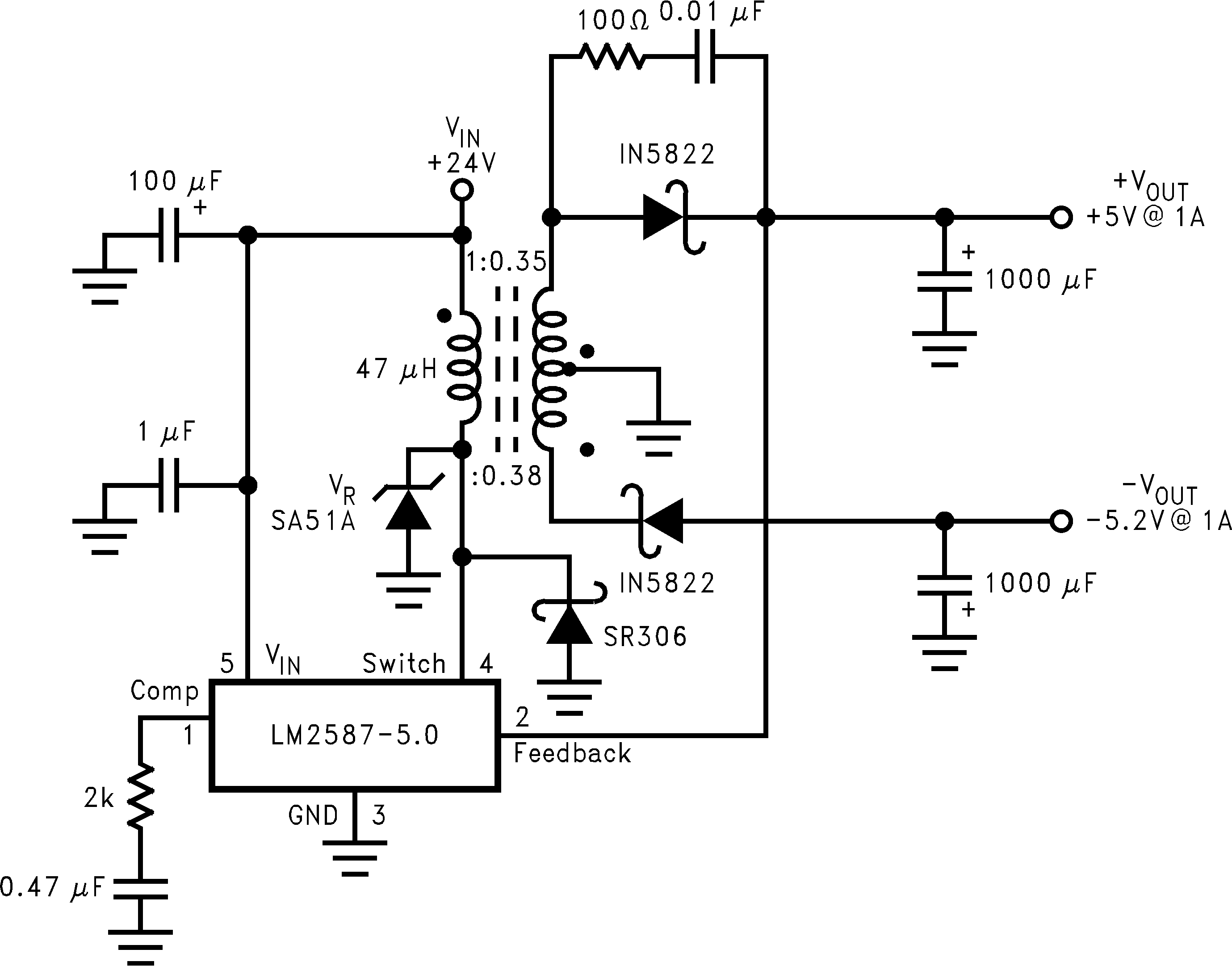SNVS115E April 2000 – June 2019 LM2587
PRODUCTION DATA.
- 1 Features
- 2 Typical Applications
- 3 Description
- 4 Revision History
- 5 Pin Configurations
-
6 Specifications
- 6.1 Absolute Maximum Ratings
- 6.2 ESDRatings
- 6.3 Recommended Operating Ratings
- 6.4 Thermal Information
- 6.5 Electrical Characteristics: 3.3 V
- 6.6 Electrical Characteristics: 5 V
- 6.7 Electrical Characteristics: 12 V
- 6.8 Electrical Characteristics: Adjustable
- 6.9 Electrical Characteristics: All Output Voltage Versions
- 6.10 Typical Characteristics
- 7 Detailed Description
- 8 Application And Implementation
- 9 Layout
- 10Device and Documentation Support
- 11Mechanical, Packaging, and Orderable Information
Package Options
Mechanical Data (Package|Pins)
Thermal pad, mechanical data (Package|Pins)
- KTT|5
Orderable Information
8.2.4.4 Flyback Regulator Input Capacitors
A flyback regulator draws discontinuous pulses of current from the input supply. Therefore, there are two input capacitors needed in a flyback regulator; one for energy storage and one for filtering (see Figure 59). Both are required due to the inherent operation of a flyback regulator. To keep a stable or constant voltage supply to the LM2587, a storage capacitor (≥100 μF) is required. If the input source is a recitified DC supply and/or the application has a wide temperature range, the required rms current rating of the capacitor might be very large. This means a larger value of capacitance or a higher voltage rating will be needed of the input capacitor. The storage capacitor will also attenuate noise which may interfere with other circuits connected to the same input supply voltage.
 Figure 59. Flyback Regulator
Figure 59. Flyback Regulator In addition, a small bypass capacitor is required due to the noise generated by the input current pulses. To eliminate the noise, insert a 1.0 μF ceramic capacitor between VIN and ground as close as possible to the device.